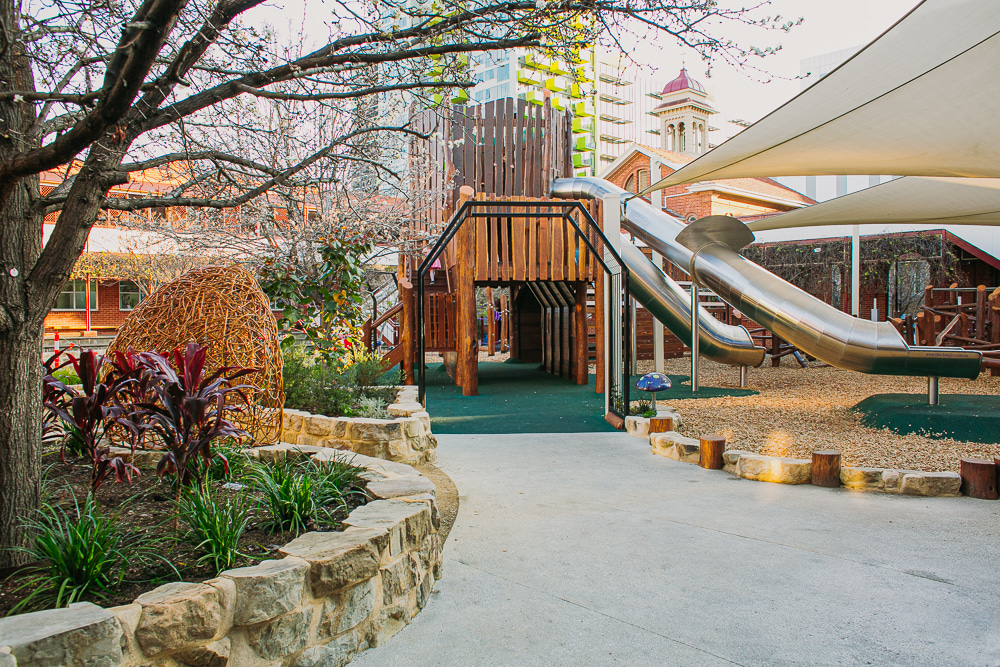WORDS: Simon Hutchinson & Bronny Elder, Climbing Tree Creations
FEATURED IMAGE: St Aloysius College playground and nature space
We know that 1 in 4 young people (15 – 24 year old) are sedentary and that this percentage increases with age. We also know that only a quarter of 5 – 14 year old’s meet physical activity requirements (AIHW). It is well documented what the benefits of being active are for a child’s physical, emotional and mental wellbeing.
We know that the majority of physical activity for adolescents is in the form of games with rules, a valuable and somewhat popular mode of play, but not all-encompassing and definitely not for every young person.
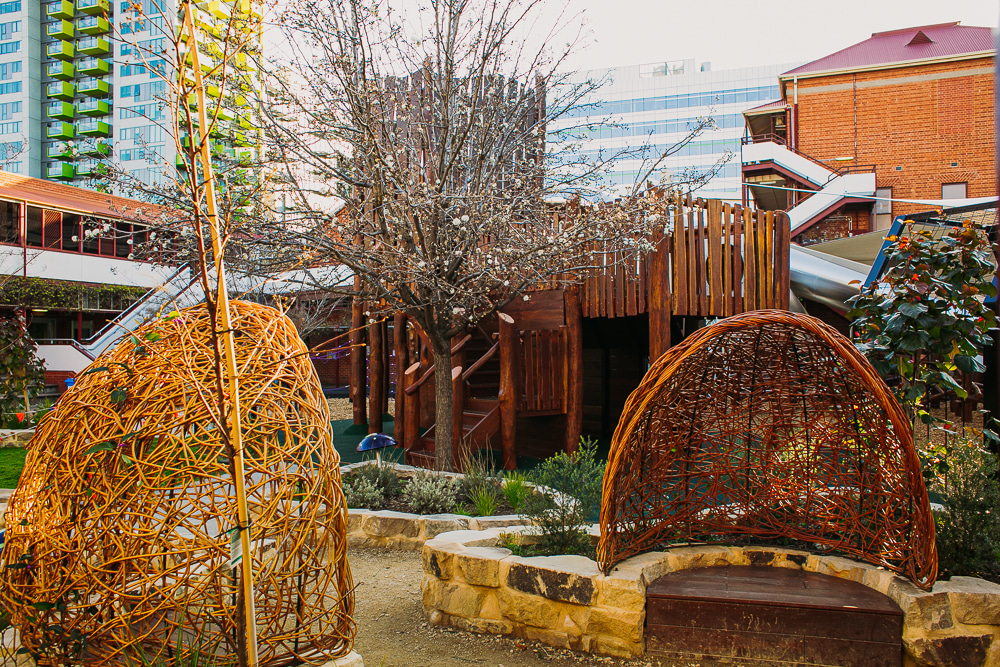
There is research in the area of Play Therapy for adolescents and how play can be used as a therapeutic treatment for poor mental health (Schaefer & Gallo-Lopez, 2005). The idea that play is used as an inoculant against poor mental health highlights to us what benefits play must have for mental health and general healthy emotional development, and causes us to question why it is treated more as a therapeutic tool than as a provision for healthy developing minds.
So what does play look like for this age group? Do we even know?
As designers and play space builders, consultation in this space is pretty interesting. When we ask what young people want to ‘do’ in a space we have to acknowledge the outside influences on adolescents in particular, how (or even, if) adolescents should play.
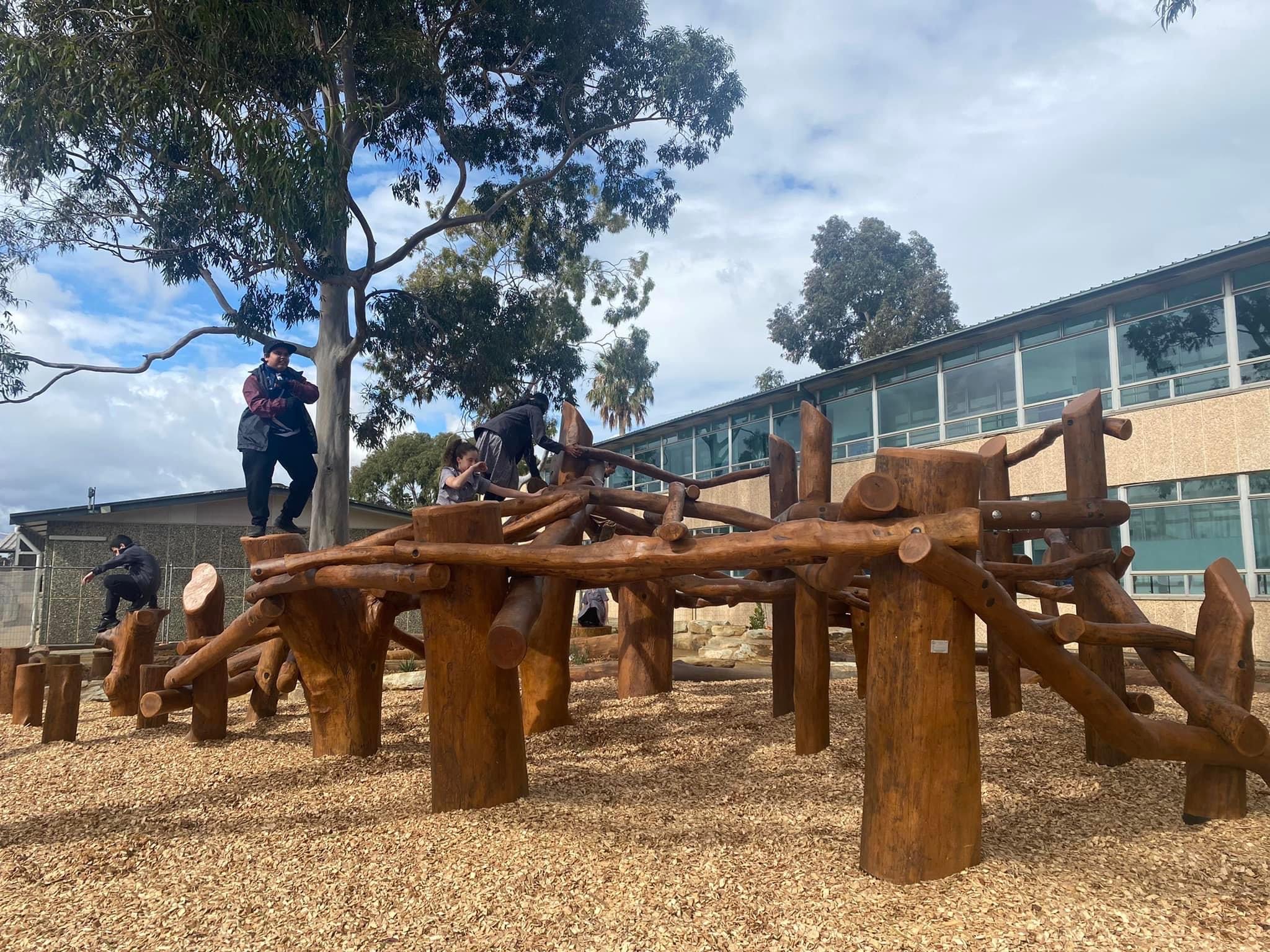
Play is a necessary part of life, even adults play whether it be card games, dress up 40ths, sports, theatre or simply the dad who is seen building a sand-mansion long after the child has lost interest. But how do we really know what play for adolescents would look like without all the external influences and barriers?
Playing is not ‘cool’ for adolescents unless done on their own terms. (Shaefer & Gallo-Lopez)
A few years ago we ran Massive Maker Space in the Southern Parklands with various different school groups; an absolute career highlight and one which we do hope to repeat. It was essentially our Junk Loose Parts Play excursion on steroids! We dumped a shipping container of junk loose parts into the parklands and stood back and watched what the children did with it; no unnecessary adult intervention, no rules. One particular day we experienced a group of year 7s from one school interacting with a group of receptions from another school. They were not known to each other, not siblings or friends-of-siblings and they played, they occupied the space in their own way, they interacted with children of other ages, and they created something amazing; a tree top cubby with a working pulley system. Now, we understood that the receptions may not be able to create this without the height and strength of their older peers, just as we understood the year 7s (walking in with their almost too-school-for-school demeanour) may not have played in such a way should the receptions not have been there.
So, fast forward to 2022 and now our year 7s are in high school and don’t have the opportunity to play in this way. There are rarely playgrounds in their space and they are confined to the play opportunities that we adults have assigned for them.
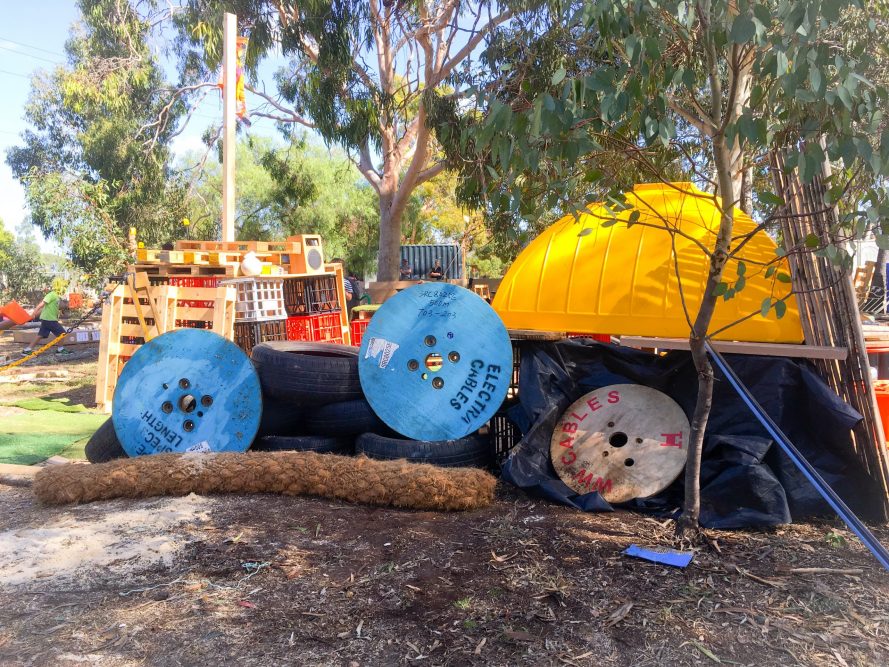
So how do we expect adolescents to answer the question ‘what do you want to do in this space?’, how would they play if they have the freedom to choose?
In our local area we see youth building and managing dirt jumps (often demolished soon after by Council due to the issues of liability this creates) and we consider this as absolute consultation gold! Here, young people are showing us what they would like to see and do in their local areas, but this doesn’t necessarily mean we fund and build a pump/bmx track. The entire process of building, testing and changing this space is what is lost when we simply construct a space for them.
“Adolescents need avenues for creation of identity as they tear down parts of the old to rebuild the new. Play serves this purpose well.” (Schaefer & Gallo-Lopez)
A mistake on an overpitched jump, is a lesson learnt. At an age where the risks may get bigger and the consequences higher, what provisions are in place for adolescents to develop their identity? When we are demolishing their jumps and banning the phones, what are we offering in their place?
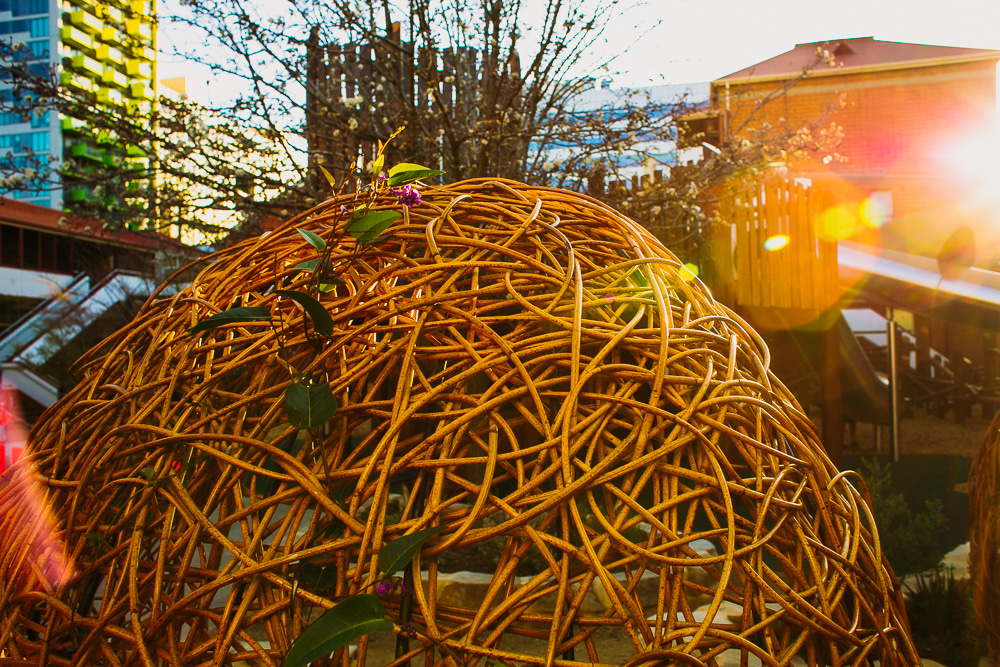
In a period of role confusion, often thwarted autonomy and seemingly unrealistic standards, adolescents deserve opportunities to play as much as any other demographic. Whilst we do not see adventure playgrounds reaching high schools anytime soon, we hope to see a move from traditionally stark education grounds to spaces which reflect the true needs and wants of its users.
In the meantime, parkour is a pretty popular middle-ground and we are happy to work with that if it means provisions for play for our youth is supported.
